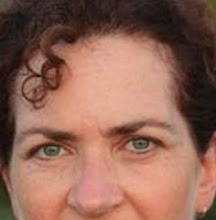
Excuse me, while I ramble, but being off-task is something I do well--something that, no matter how earnestly I try to walk that straight and narrow path, always takes me on a detour. I eventually find my way back, but not without having pored cover-to-cover over multiple field guides, browsed internet images, and consulted the text, once again. In the end, I am better for my effort. But, the process isn’t linear, by any means. I zig and zag my way through each and every outing. My interest in becoming a better naturalist consumes much of every day.
 Roadside Flowers
Roadside FlowersDetermined to focus on birds, I stand at the shoulder of the road, straining to hear a faint song from deep in the woods beyond a field. Atlasing for the Ohio Breeding Bird Atlas (OBBAII) is training my mind to listen better to what it is likely that I have heard all along, to separate from the chorus of song each individual voice, to think in advance of what might be chipping, unseen, within each fence row. It’s less an exercise for the ears, more an exercise in figure-ground—and with each day, a bit more of my initial difficulty eases. I hear the subtle sounds, and gradually learn to put names to them.
Beneath the fence, a small fleck of red peeks out of the weedy road’s edge in front of my toes. Scarlet Pimpernel? Its fleeting flowers fully open, and I without my camera! I know it’s not native. Yet, I’ve seen it only once before, and never on this path I walk. From birds, I turn and think of flowers. Flowers are what I am studying at home.
Books have become my weight-training—a repetitive task whose benefit isn’t fully recognized until tested. Weeks ago it was books about warblers. In the heat of summer, I’ve switched from books about birds, to books full of plants and insects. And the test, is my daily walk, which at times, with the pace of change, seems like a race I will never finish. I think of others in the race before me, those more-skilled naturalists running circles while I still purposely plant each foot, those able to lithely name each plant, each bird, each frog, each butterfly. Not competitors, fellow-athletes, who by closely following whenever I’m able, catapult me yards ahead with an afternoon of birding or botanizing. Just a few strides ahead of me, are others, too, their place within my reach. Many jog by my side.
I read about Scarlet Pimpernel, Anagallis arvensis, and learn it is a member of the Primrose family and a Eurasian native, but 4 pages ahead of its description in my manual is Bird’s-Eye Primrose, Primula mistassinica, a native with the diminutive pale pink petals I saw early this summer on the gravelly Michigan shore. I find Whorled Loosestrife listed here too, Lysimachia quadrifolia, that I saw on the prairies of Adams County weeks ago.
With photos gathered, the text begins to come alive.
I study the Primrose family.
But with a little knowledge gathered, the quest begins again. What about those other loosestrifes that are in a different family? I know I saw one bloom last year, along this country road. Was it Purple Loosestrife, the much-hated invasive, or Winged Loosestrife, the native species, still purple, but with the single flowers? Can I catch it flowering before the township cuts it back?
The afternoon sun is blazing as I walk the country block to the place I knew that I had seen it. Bikes fly past me, bikers drenched in the sweat of their workout. But I move with a different purpose—putting names to as much as I am able as I walk steadily down the path…birds, plants, and more. Here, on a straight lane that runs between 2 soy fields, the shoulder is blanketed with clover. Zebra swallowtails drink in its nectar while Sulphurs and Eastern-Tailed Blues tumble between them. Only the quick-to-recover chicory stands taller than the shorn weeds of the roadside. But it is enough to provide perches for several Halloween Pennant dragonflies.
Tonight I will read about insects—prepare the natural athlete for the next race.



























































